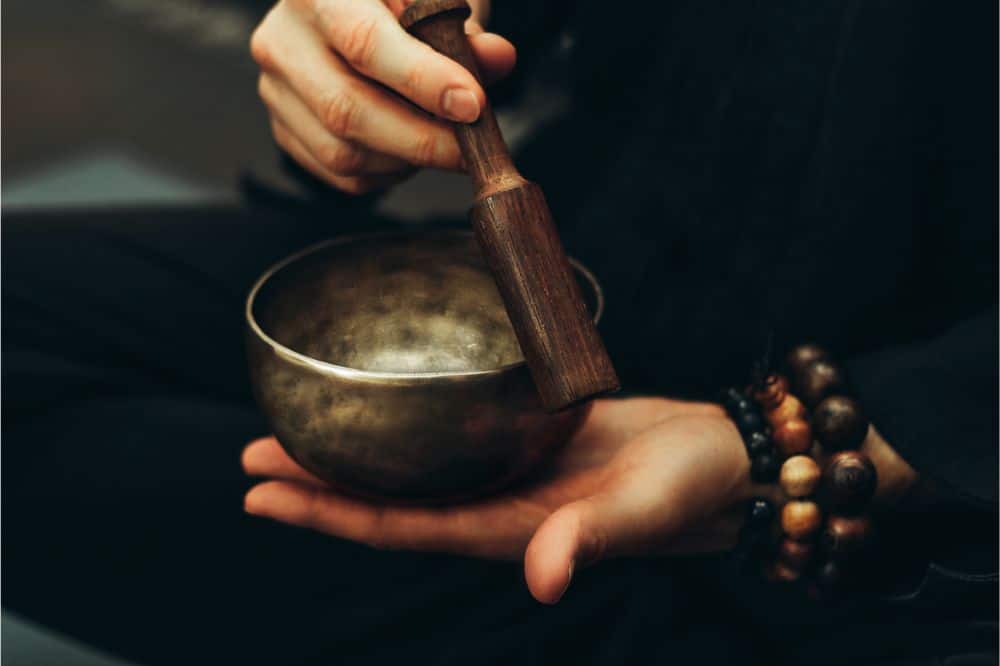When it comes to singing bowls, you must be very careful handling them, which includes cleaning. Since the rim is the most essential part, it only makes sense that you take extra care when cleaning your bowl to not handle the rim too much.
This article will discuss how to properly handle and clean a singing bowl, so it will work for you for many years. Let’s get started.
How to Handle a Singing Bowl
When handling and cleaning a singing bowl, it is essential to make sure that you are not handling the rim any more than necessary.
When cleaning your singing bowl, make sure that you are only handling it from the side, and lift it with both hands to ensure that you do not drop it. It is never a good idea to pick up a singing bowl with one hand, both because it can damage the rim, and you could end up dropping and breaking it.
You may wonder why it is essential to properly handle a singing bowl since they are made from metal.
They can crack, and even though a crack isn’t likely to ruin a singing bowl, it can affect the sound significantly. Unfortunately, there is nothing that you can do to repair a crack, and you will always be able to hear the difference in the sound it produces.
Cleaning a Singing Bowl
To prevent a buildup of dust on your singing bowl, you must clean it regularly. For the most part, all you should have to do is wipe it down with a soft cloth to get rid of dust. If there is any dust caked on your singing bowl, it will lose some of its resonance.
Plus, you never know what is in the dust; the dust particles could have chemicals that can react with the bowl’s metal.
Always try to use a clean cloth when cleaning your singing bowl. This will help maintain the patina, so not only will it continue to sound wonderful, it will look pretty great as well. If you have a bright bowl, you can also use white vinegar to remove any fingerprints.
Singing bowls are strong yet delicate at the same time, and because they are made of metal, they will tarnish over time. Luckily, it will not hurt the bowl if you choose to use a tarnish remover, and pretty much any metal cleaner will do the trick.
Ensure that you clean off any residue from the metal cleaner to keep it from damaging the bowl. If your bowl is particularly dirty, you may want to start the process using a coarse, woven piece of cloth that will be just abrasive enough to get rid of the tarnish.

Don’t be too Aggressive in Your Cleaning
Some people don’t mind using harsher cleansers to clean their singing bowls, but there is one significant drawback to doing so: You could end up damaging the sound quality.
Early singing bowls were much thicker than they are now, and because they have been cleaned many times over the years, the metal has often been removed through this type of handling.
Obviously, this changes the tone of the bowl, and it will give it a deeper tone. The thinner the bowl gets, the lower the tone will become, although the differences are quite subtle.
Using Steel Wool To Clean a Singing Bowl
If there is too much buildup on a singing bowl, it can cause the contact with the stick to be a bit on the rough side. If this should happen, you can use steel wool to clean it, particularly the more recent models coming out of China made from metals that are softer than steel.
In fact, if you want to get the bowl to the base metal, steel wool is a great tool to use, or you can also use copper or steel beads, as well as brass cleaners. This will allow the copper and tin in the base metal to really sparkle.
Using Liquid Cleaners on Singing Bowls
It is not advisable to use water to clean a singing bowl. If you choose to use a liquid cleaner, it is essential to thoroughly dry the bowl after cleaning it. Never spray Coca-Cola onto a singing bowl.
Yes, it can remove rust and dirt, but it can also corrode the bowl’s metal. Also, never let water sit in a singing bowl for any length of time. If you enjoy playing your bowls with water inside, make sure it is distilled water, and again, dry it thoroughly after using it.

